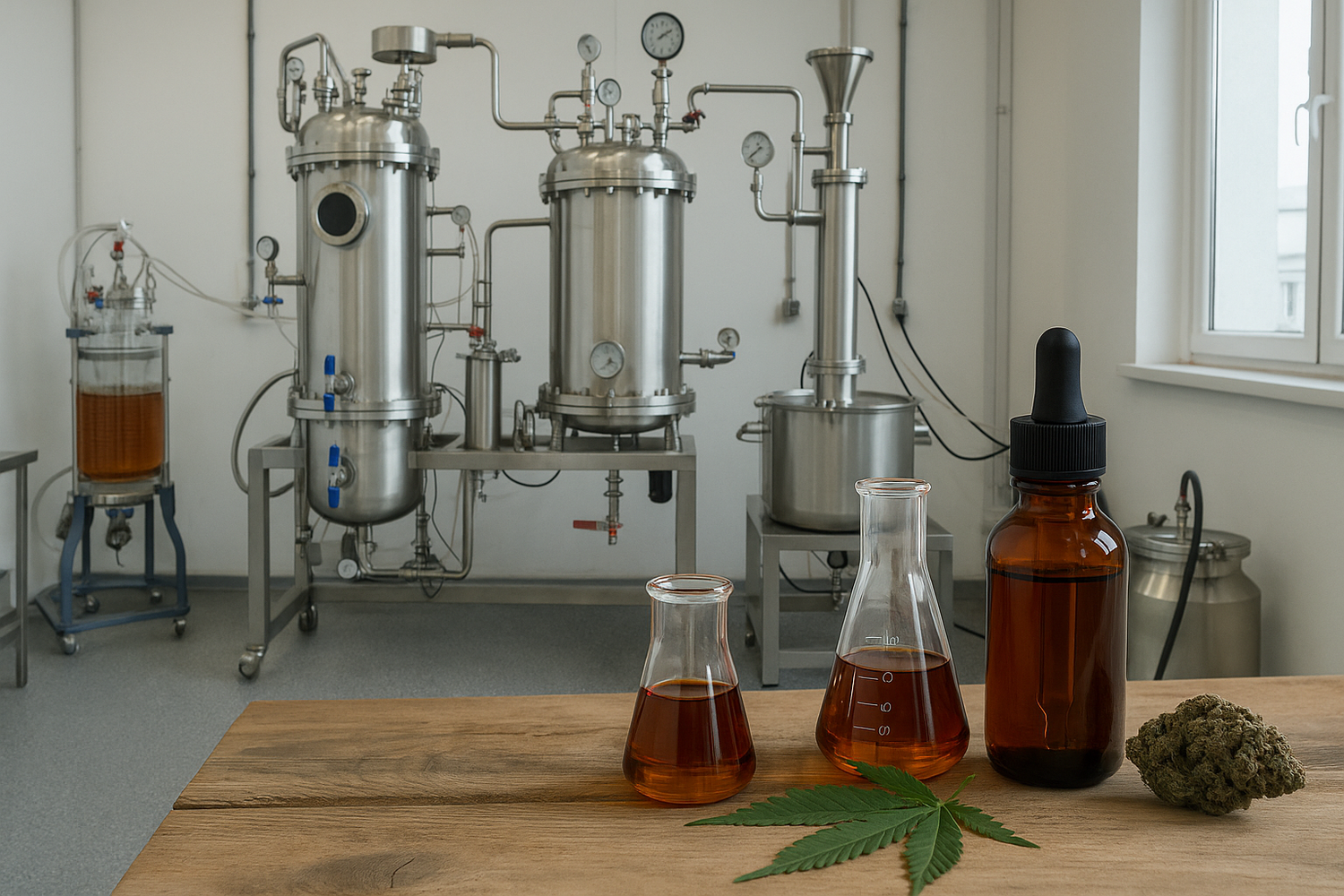Cannabis oil—rich in cannabinoids like CBD, CBG, and Delta-9 THC—has become a wellness staple, but have you ever wondered **how this potent oil is actually extracted from the plant?** Whether you're using cannabis products for **sleep, recovery, or relaxation**, understanding the extraction process helps you appreciate both the science and safety behind your favorite gummies, tinctures, or topicals.
What’s in the Plant?
The **cannabis plant (Cannabis sativa L.)** contains more than 100 biologically active compounds known as **cannabinoids**, including:
- **THC (Delta-9-tetrahydrocannabinol)** – the psychoactive component
- **CBD (Cannabidiol)** – non-intoxicating, calming, anti-inflammatory
- **CBG (Cannabigerol)** – considered the “mother cannabinoid”
- **Terpenes** – aroma compounds with their own therapeutic benefits
These compounds reside in **trichomes**, the resin glands found mostly on the flowers and leaves of mature cannabis plants.
Step 1: Harvesting and Preparation
Before extraction, plants are **harvested, dried, and cured** to reduce moisture and preserve cannabinoids. Once cured, plant material is **ground into a consistent size** to optimize surface area for extraction.
Step 2: Extraction Methods
There are several methods for extracting cannabis oil, each with pros and cons. The goal is to **separate cannabinoids and terpenes** from plant matter while preserving their structure and bioavailability.
1. CO₂ (Supercritical Carbon Dioxide) Extraction
**How it works:** CO₂ becomes a *supercritical fluid* and extracts cannabinoids.
- **Pros:** Clean, solvent-free, precise.
- **Cons:** Expensive.
**Source:** [Basu et al., 2020](https://doi.org/10.1016/j.supflu.2020.104717)
### 2. Ethanol Extraction
**How it works:** Soaks cannabis in food-grade ethanol.
- **Pros:** Fast and scalable.
- **Cons:** May extract chlorophyll.
**Source:** [American Herbal Pharmacopoeia, 2013](https://www.herbal-ahp.org/)
3. Hydrocarbon Extraction (Butane/Propane)
**How it works:** Dissolves cannabinoids using flammable solvents.
- **Pros:** Preserves terpenes well.
- **Cons:** Must remove residual solvent carefully.
**Source:** [Hazekamp, 2018](https://pubmed.ncbi.nlm.nih.gov/29320373/)
4. Cold Pressed / Rosin Technique (Solventless)
**How it works:** Applies heat and pressure to squeeze out oil.
- **Pros:** Clean and natural.
- **Cons:** Lower yields.
Step 3: Winterization & Filtration
This step removes fats and waxes using cold ethanol and filtration.
Step 4: Distillation & Isolation
- **Short-path distillation** and **chromatography** isolate pure cannabinoids for full-spectrum or isolate products.
Step 5: Testing & Safety
Final oil is lab-tested for:
- Cannabinoid content
- Residual solvents
- Pesticides & heavy metals
**Source:** [USP, 2023](https://www.usp.org/news/usp-cannabis-quality)
Final Thoughts
Whether you're enjoying **Bliss Bytes gummies** or **Doc Thackery topicals**, your product started as a plant, extracted with care and precision. Extraction is the science behind your relaxation.
---
TL;DR:
- Cannabis oil comes from trichomes.
- Methods: CO₂, ethanol, hydrocarbon, rosin.
- Clean products depend on smart extraction and testing.

